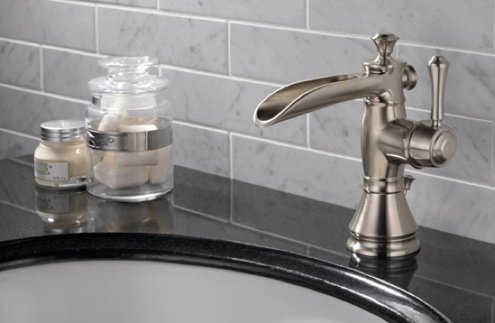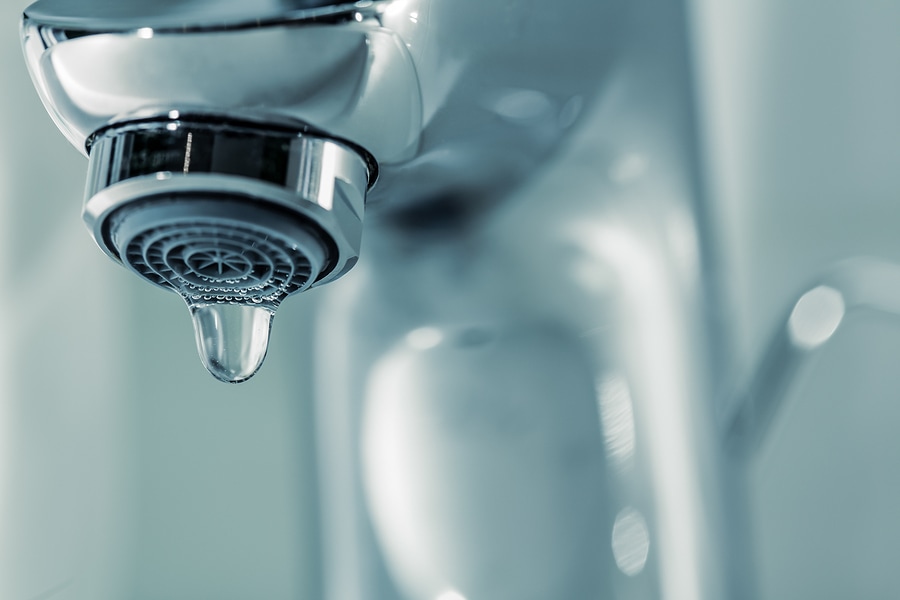An Relevance of Resolving a Leaking Faucet
An Relevance of Resolving a Leaking Faucet
Blog Article
They are making a number of good pointers on Why It's Important to Fix Leaky Faucets as a whole in this great article underneath.

Trickling taps may feel like a small aggravation, but their impact exceeds simply the annoyance of the noise. From wasting water to incurring unneeded monetary expenses and health dangers, disregarding a leaking faucet can lead to different effects. In this short article, we'll explore why it's critical to address this usual family concern promptly and efficiently.
Wastefulness of Water
Ecological Impact
Dripping taps add dramatically to water wastefulness. According to the Epa (EPA), a solitary tap trickling at one drip per secondly can squander more than 3,000 gallons of water annually. This not only stress water sources but likewise influences ecological communities and wildlife based on them.
Financial Costs
Raised Water Expenses
Beyond the environmental effect, dripping faucets can pump up water costs substantially. The built up wastefulness with time translates right into higher energy expenditures, which could have been stayed clear of with timely repair work.
Potential Residential Property Damage
Additionally, long term trickling can lead to harm to components and surfaces bordering the tap. Water build-up can cause discoloration, deterioration, and also structural problems if left unattended, resulting in added fixing prices.
Wellness Issues
Mold And Mildew and Mildew Development
The continuous visibility of dampness from a leaking faucet produces an excellent atmosphere for mold and mildew and mildew growth. These fungi not just compromise interior air top quality yet also position health threats, specifically for individuals with respiratory conditions or allergic reactions.
Waterborne Conditions
Stagnant water in trickling faucets can become a breeding place for bacteria and various other microorganisms, boosting the threat of waterborne conditions. Contaminants such as Legionella germs grow in stagnant water, possibly leading to significant health problems when consumed or inhaled.
Do it yourself vs. Professional Fixing
Benefits and drawbacks of Do It Yourself Repair Service
While some might attempt to take care of a leaking tap themselves, do it yourself repair services feature their own set of challenges. Without proper knowledge and devices, DIY attempts can worsen the concern or cause insufficient repair services, prolonging the problem.
Advantages of Working With an Expert Plumber
Employing a professional plumber makes sure that the underlying reason for the leaking tap is attended to efficiently. Plumbings have the experience and tools to detect and fix tap issues successfully, conserving time and reducing the threat of additional damages.
Step-by-Step Guide to Taking Care Of a Dripping Faucet
Devices Required
Before trying to deal with a trickling faucet, collect the necessary tools, including a flexible wrench, screwdrivers, replacement parts (such as washers or cartridges), and plumber's tape.
Usual Tap Issues and Their Solutions
Identify the sort of tap and the particular problem triggering the drip. Typical troubles consist of worn-out washers, corroded valve seats, or malfunctioning O-rings. Refer to manufacturer directions or on the internet tutorials for step-by-step assistance on repair work.
Preventive Measures
Normal Maintenance Tips
To stop leaking faucets, carry out regular upkeep such as cleansing aerators, checking for leakages, and changing worn-out components promptly. Furthermore, consider mounting water-saving gadgets or upgrading to a lot more effective fixtures.
Significance of Prompt Repairs
Attending to leaking faucets as soon as they're noticed stops more water wastage and possible damages, eventually conserving both water and money in the long run.
Impact on Home Value
Understanding of Well-Maintained Property
Keeping a residential or commercial property in good condition, including resolving maintenance issues like trickling taps, enhances its perceived worth and value among potential customers or occupants.
Influence on Resale Worth
Residences with properly maintained plumbing fixtures, consisting of faucets, command greater resale values in the property market. Resolving leaking taps can add to a favorable impression throughout property inspections and settlements.
Environmental Duty
Specific Payment to Conservation
Taking responsibility for taking care of trickling taps aligns with broader initiatives towards water conservation and ecological sustainability. Every person's activities jointly make a substantial influence on preserving precious resources.
Sustainable Living Practices
By focusing on timely repair services and taking on water-saving routines, people contribute to sustainable living practices that profit both existing and future generations.
Verdict
Dealing with a trickling faucet surpasses plain ease; it's an essential action toward saving water, minimizing monetary expenses, and safeguarding health and building. Whether through do it yourself fixings or professional aid, acting to take care of trickling taps is a tiny yet impactful method to advertise responsible stewardship of sources and contribute to a much healthier, extra sustainable future.
How to Fix a Dripping or Leaky Faucet
A leaking faucet is one of the most common problems that homeowners encounter, but it being commonplace doesn’t make it any less annoying. The constant drip drip drip of a leaking bathtub faucet, showerhead, or sink tap can disturb your home’s serenity. Left neglected, a dripping faucet can also result in higher water bills and discoloration or mold growth in your sink or plumbing fixtures.
Fortunately, you don’t have to be a trained plumber to know how to stop a dripping faucet. With some basic tools, replacement parts, and a little patience, leaky faucet repair is a breeze. In this article, we’ll explain what causes dripping faucets and how you can fix them.
What Causes a Leaking Faucet?
Kitchen and bathroom faucets come in all manner of designs, but most involve some combination of valves, O-rings, seals, and washers. The O-ring is usually the weakest link, but any one of these pieces can wear down over time. Heat, moisture, temperature fluctuations, minerals, mold, and movement can contribute to warping and corrosion, breaking the watertight seal. This just comes with the territory of being a homeowner. Everything is always subject to wear and tear, and some component parts of your appliances and fixtures need to be replaced on occasion. At least replacement O-rings are cheap!
More rarely, dripping faucets can be a symptom of excessively high water pressure. Were this the case in your home, you would probably notice that the leak is not isolated to one faucet. Water pressure issues are harder to resolve on your own. We recommend contacting a professional plumber if you suspect your water pressure is too high.
How to Fix a Dripping Faucet
Pipe wrench or monkey wrench Allen wrench set Screwdrivers Old towel or rag Shut off the water.
Before you do anything, you need to turn off the water to keep from drenching your kitchen or bathroom. You should find a valve under the sink and against the wall. Once you’ve turned this valve, try turning the faucet on to confirm that the water source has been cut off.
If you can’t locate your local valve for the faucet you’re working on, you can always shut off the water to the house at the main valve. Of course, this will prohibit anyone from using the sinks, showers, or toilets while you’re working on the faucet that’s giving you trouble.
Plug or block the drain.
You’ll be disassembling the faucet and removing some small bits of hardware. Plug the drain with a stopper or rag to avoid the possibility of a small screw falling into your P-trap.
Take apart the faucet assembly.
There are several varieties of kitchen and bathroom faucets, each with its own manner of assembly. For detailed instructions on how to disassemble your faucet, you can refer to the fixture’s manual or contact the manufacturer. If you know whether you have a ball, disc, cartridge, or compression faucet, you can find detailed schematics online.
In general, you need to begin by removing the faucet handles. You might notice a small screw that you’ll need to remove with a screwdriver or Allen wrench. If you don’t see any visible securing hardware, it’s likely hidden under a decorative cap that can be unscrewed or popped off with flathead screwdriver.
Remove each piece methodically, consulting a schematic when necessary. Take notes or arrange the pieces in such a way to make it easier to correctly reassemble the faucet later.
Remove the cartridge.
Once you’ve removed the handles and securing hardware, you should be able to remove the valve cartridge or stem. Some cartridges will slide right out. Other faucet models will require you to loosen a nut with a pipe wrench before you can remove the valve stem.
Examine the exposed hardware.
With the cartridge or stem removed, inspect the component parts. Check the rubber O-rings for wear and tear. Also examine the seat washer for corrosion or other damage. These pieces are usually the responsible parties for a dripping faucet, but it’s worth inspecting the other component parts while you have the faucet disassembled.
Find replacement parts.
Once you’ve identified which faucet component has failed, find an identical replacement. Your local hardware store should have O-rings, seat washers, and other standard components in stock. If you have a luxury or uncommon faucet, you may have to contact the manufacturer for a replacement part.
It’s a good idea to take your old parts with you to the hardware store so you can compare them with the store’s inventory and be sure you’re purchasing the correct replacement.
Reassemble the faucet.
With your new parts in hand, reconstruct the faucet and handles. Don’t be tempted to overtighten screws or nuts. You might think this could create a better seal, but it can instead damage or bend a delicate part of the assembly and create a new problem for you.
Turn on the water and test the faucet.
The only thing left to do is test your work. Unplug the sink, turn the water back on, and try the faucet. Congratulate yourself on a job well done!
https://www.libertyhomeguard.com/how-to-fix-a-dripping-or-leaky-faucet/

I recently found that write up on Why Are My Faucets Dripping (And Can I Fix It Myself)? when doing a lookup on the internet. Are you aware of anybody else who is curious about the niche? Please feel free to promote it. Thanks so much for going through it.
Report this page